Inorganic Standards Group
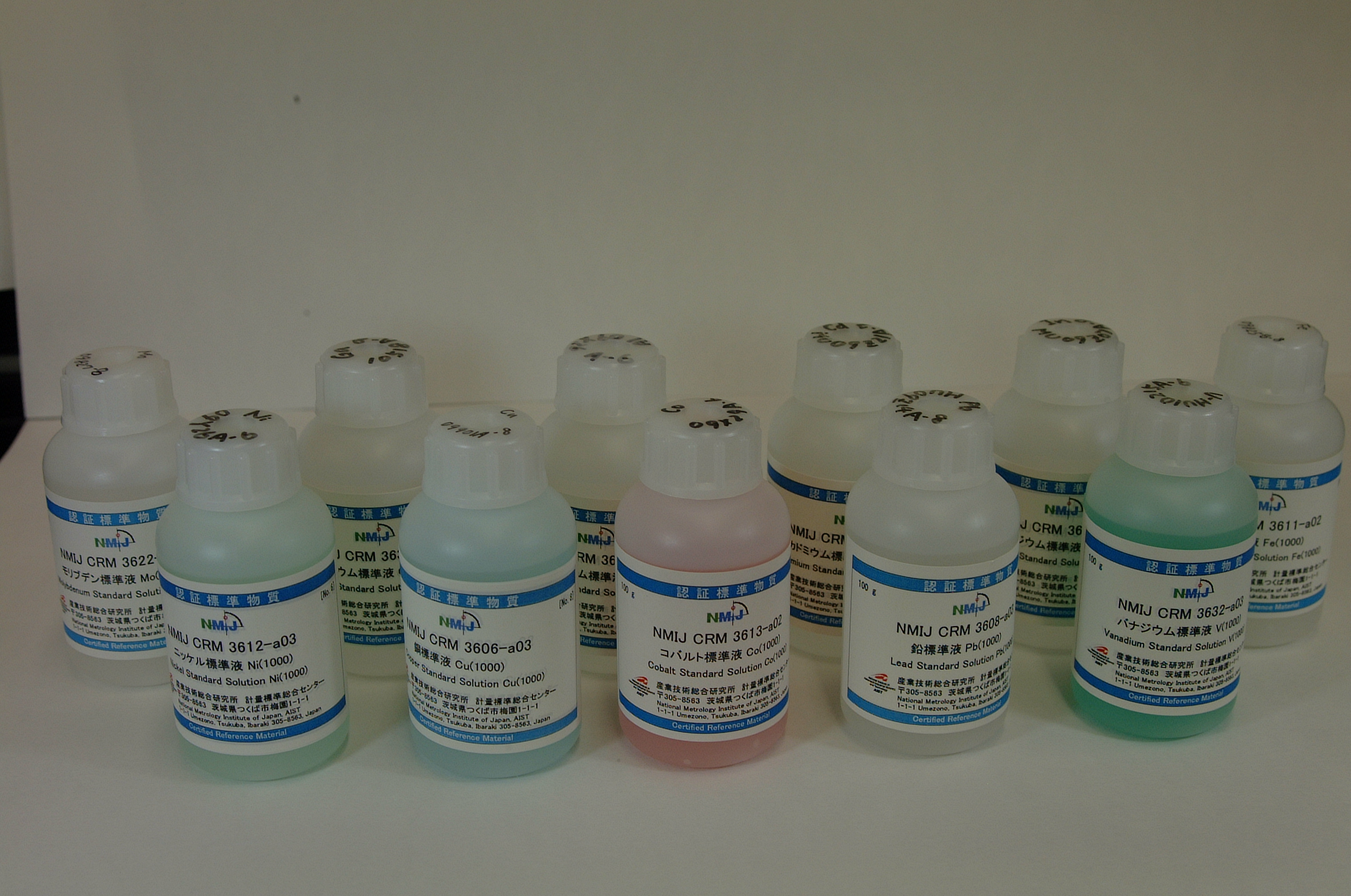
|
The Inorganic Standards Group develops, maintains, and supplies pH standard solutions, electrolytic conductivity standard solutions, elemental standard solutions, high-purity inorganic standards, and industrial material standards for inorganic analysis, to meet domestic needs. This group appropriate accurately and precisely determines primary standard for inorganic analysis using potential primary methods (e.g., the Harned cell method, coulometric analysis, titrimetric analysis, gravimetric analysis, isotope dilution mass spectrometry, and neutron activation analyses). And this group conducts the application studies associated with them.
|
Environmental Standards Group
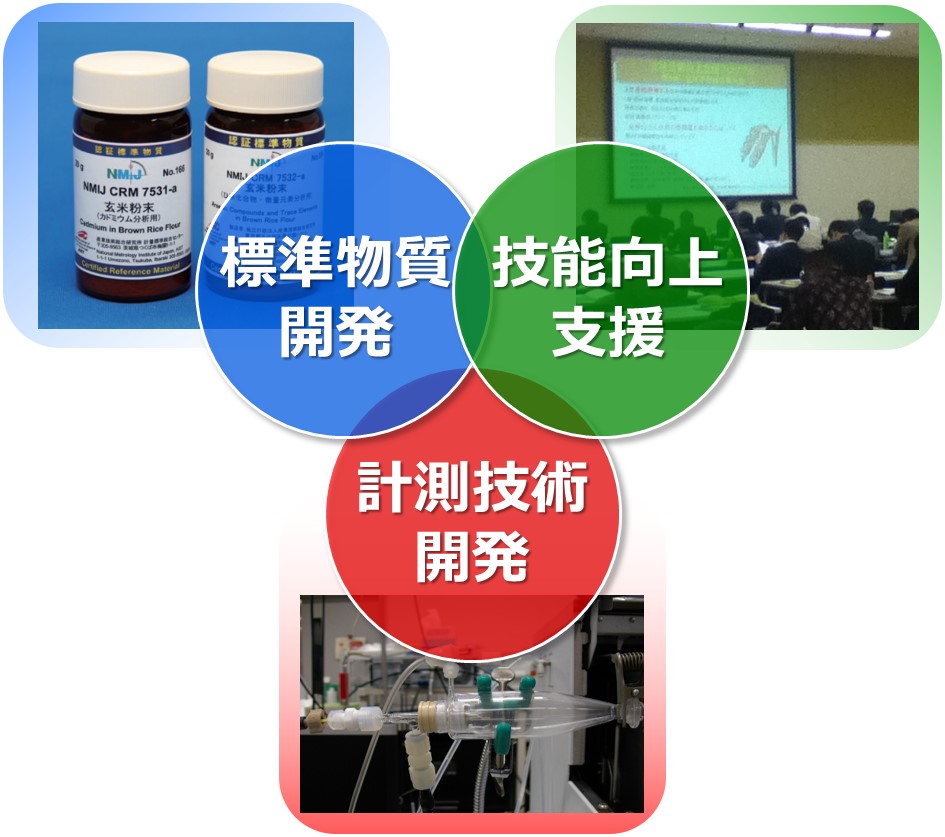
|
Ensuring the analytical reliability in chemical testing is essential for guaranteeing environmental comfort as well as warranting food safety. In order to ensure analytical reliabilities in the field of environmental and food testing, the present group is embarking on the research activities for establishing reliable analytical techniques (RATs), developing matrix-type reference materials based on the RATs, and providing support programs for upgrading technical skills of analysts in testing laboratories. |
Gas and Humidity Standards Group

|
The Gas and Humidity Standards Group
develops and supplies various kinds of gas standards metrologically traceable
to the International System of Units as well as humidity standards ranging from
trace amounts at ppb level of moisture to high humidity at a dew point of 95
°C. For these standards, this group conducts studies on the preparation methods
of gas standards based on high-precision mass measurement and high-sensitivity
spectroscopy via cavity ring-down spectroscopy (CRDS). This group also develops
gas standards for greenhouse and related gases, which are topical issues, in
cooperation with other observational institutes in Japan. |
Organic Analytical Standards Group

|
Use of certified reference materials
(CRMs) and participation in proficiency testings (PTs) are key elements for
ensuring quality control of food, environmental, and industrial product
analyses. The Organic Analytical Standards Group develops accurate
quantification methods for micro-organic compounds, such as pesticides,
polychlorinated biphenyls (PCBs), polycyclic aromatic hydrocarbons (PAHs), and
perfluoroalkyl substances (PFASs), and moisture. Based on these methods, we
develop and supply highly reliable matrix-type and calibration CRMs for food,
environmental, and industrial product analyses. We also organize PTs for
residual pesticide analyses. |
Organic Primary Standards Group
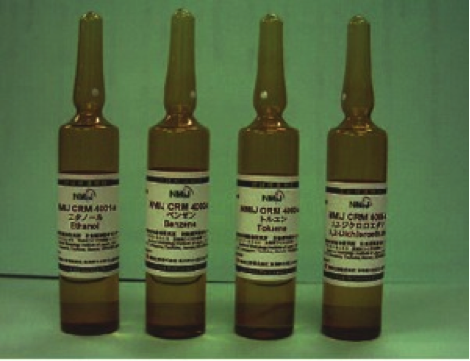
|
Most analytical instruments used for the
determination of organic compounds such as hazardous components in foods or in
the environment lack internal calibration standards, and thus require
calibration with reference materials. The Organic Primary Standards Group
researches and develops techniques for assessing purity or concentration of
organic compounds (e.g., freezing point depression method, quantitative NMR,
and titrimetry) that are traceable to the International System of Units.
Although we have provided our research results in the form of certified
reference materials and of calibration services to the industrial world, etc.,
such traceable organic reference materials are supplied insufficiently.
Therefore, this group aims to establish more efficient development and supply
system that can provide reliable standardss promptly and inexpensively. |
Bio-medical Standards Group
 |
Measurements of biomolecules in health monitoring, in food analysis, and in pharmaceutical quality controls, are essential for our healthy and comfortable life. Focusing on a variety of biomolecules ranging from low-molecular-weight compounds, such as steroid hormones and amino acids, to biological macromolecules, such as proteins and nucleic acids, the Bio-medical Standards Group develops accurate analytical techniques and certified reference materials to ensure the reliability of bioanalyses and clinical chemical measurements. |
Particle Measurement Research Group
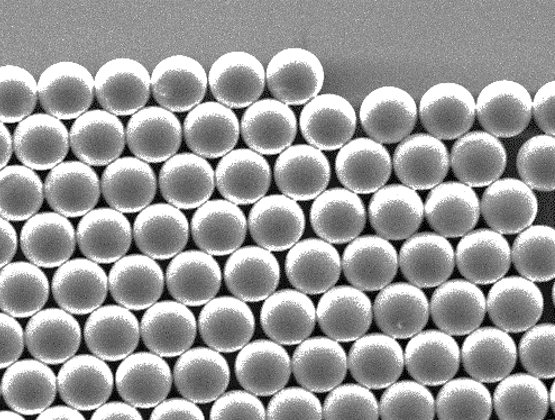 |
The Particle Measurement Research Group researches the measurement of particles and polymers. Particles, powders, and polymeric materials have been widely used in the development of advanced materials, medical services, and general commodities. Some of these particles are found in the environment, for example, in the form of PM2.5. To facilitate accurate and precise measurement of particle properties, including particle size, this group provides standards of particles and polymers, including some at the nanometer scale. In addition, this group develops technologies to measure particle properties with high precision as well as new standard materials and calibration techniques and conducts international standardization activities including contribution to ISO standards. |
Thermophysical Property Standards Group
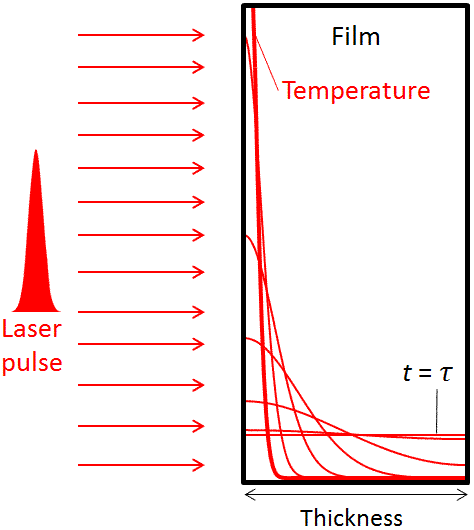 |
In modern society which requires a great deal of energy consumption, it is important to solve various heat-related problems such as the thermal insulating of buildings for energy saving and the thermal countermeasure of electronic devices. To solve these problems, Thermophysical Properties Standards group develops measurement technologies for thermophysical properties of functional materials and supplies SI-traceable thermophysical property standards and provides a database of thermophysical property data. |
Nanomaterial Structure Analysis Research Group
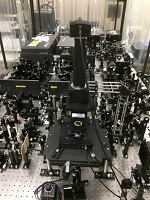 |
Under Construction |
Nanodimensional Standards Group
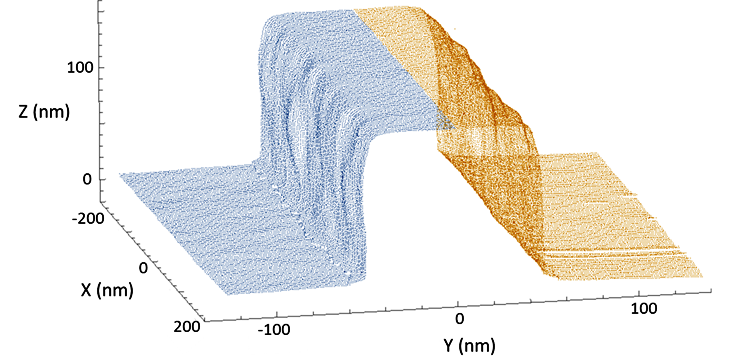 |
As the nanotechnology has been advanced, the highly functional nano dimensional structures such as line patterns of semiconductor devices, thin film structures and multilayered structures have been developing, and the measurement technologies are being expected to improve the precision of nanoscale measurements. The Nanodimensional Standards Group by using the metrological atomic force microscopes and several types of scanning probe microscopes, scanning electron microscopes, transmission electron microscopes, and neutron activation analysis technologies, provides calibration services, distributes certified reference materials, promotes international standardization, and collaborates with several organizations inside and outside the AIST. |
Material Structure and Property Analysis Research Group
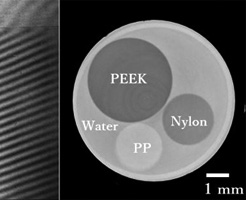 |
Our group develops precise measurement techniques related to material structures (X-rayCT, crystallography, X-ray diffraction analysis, solid state NMR) and material properties (thermal diffusivity of thin films, thermal resistance at interfaces, liquid viscosity at high pressures) for advanced materials. We also provide high quality and large-scale databases related to spectra for organic compounds, thermophysical properties, and solid-state NMR spectra, which are open to the public through the internet. |
